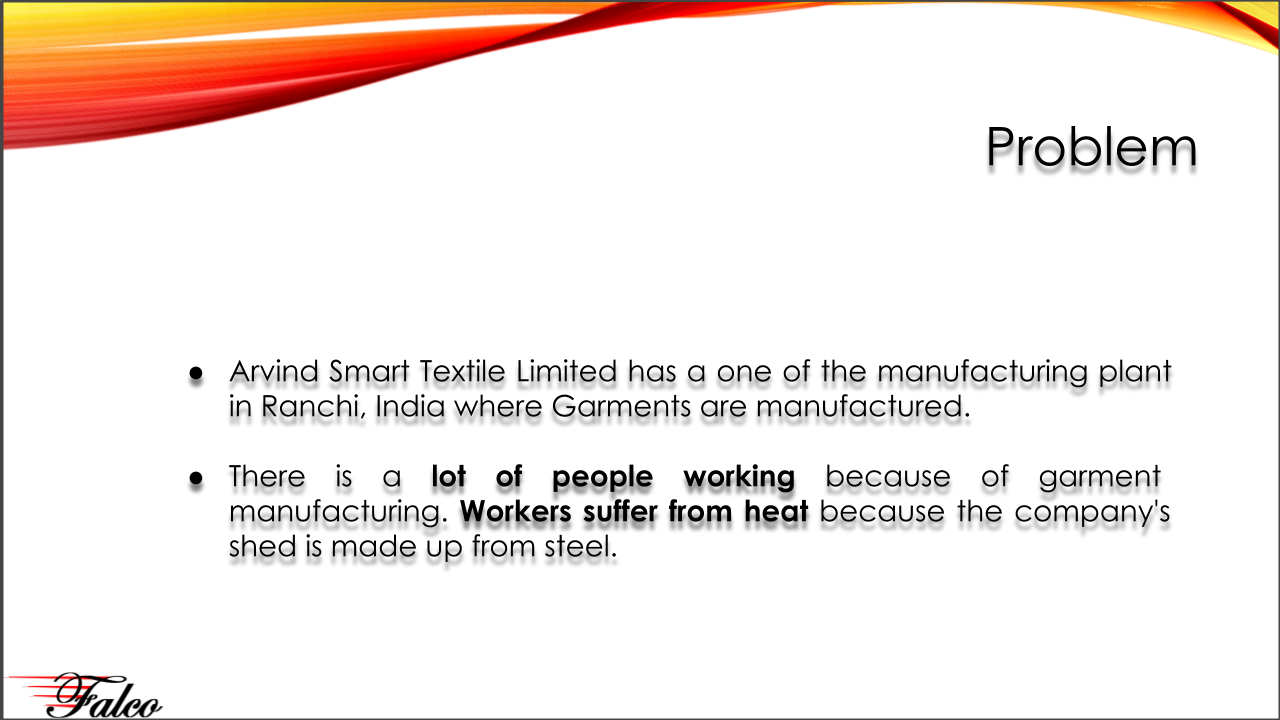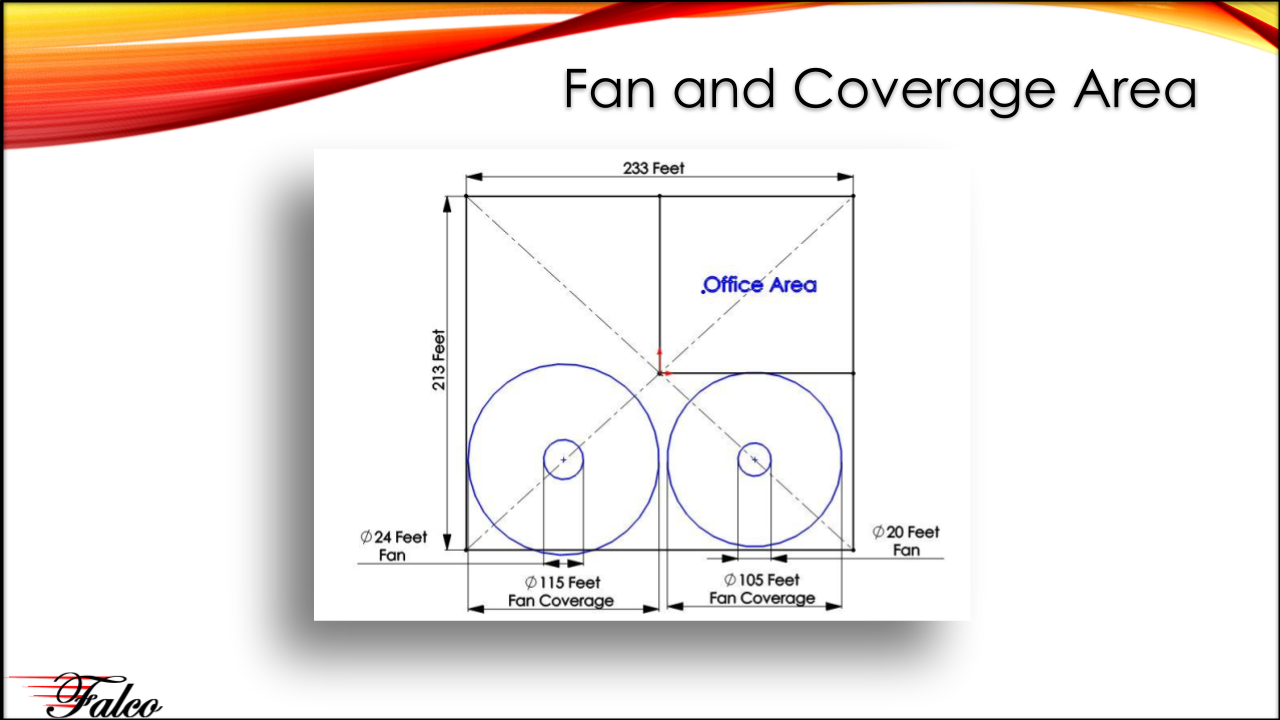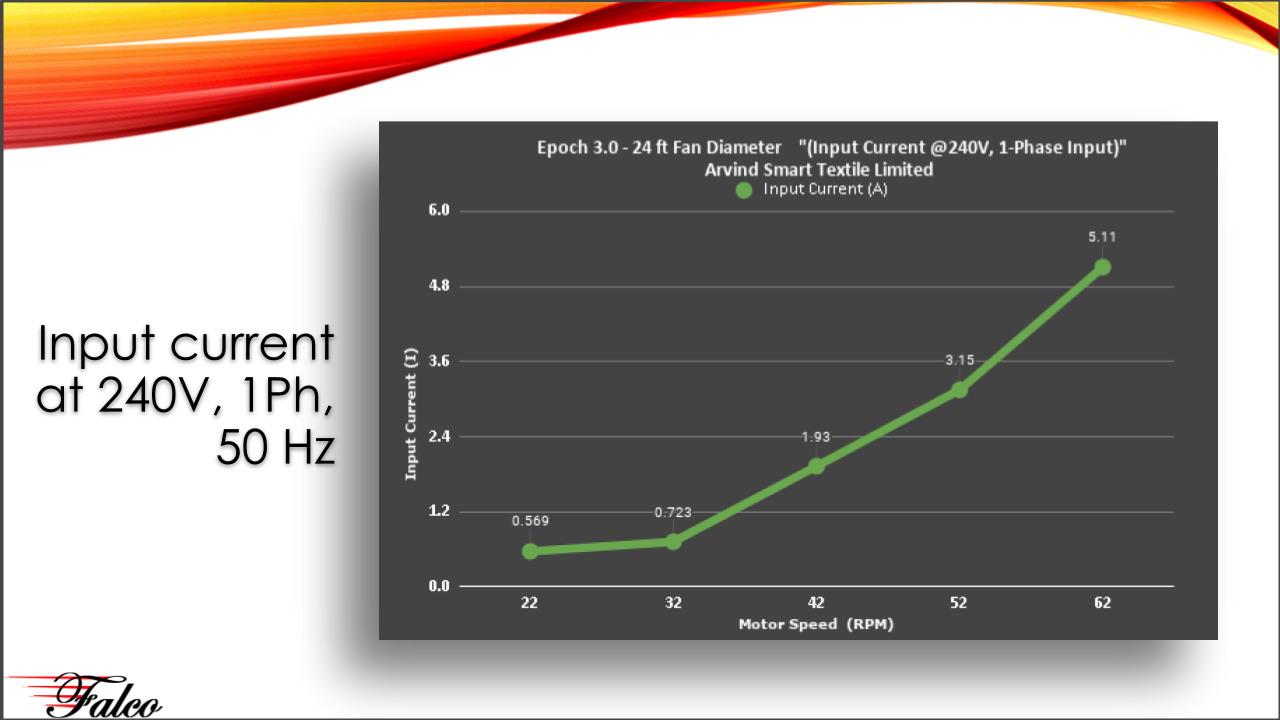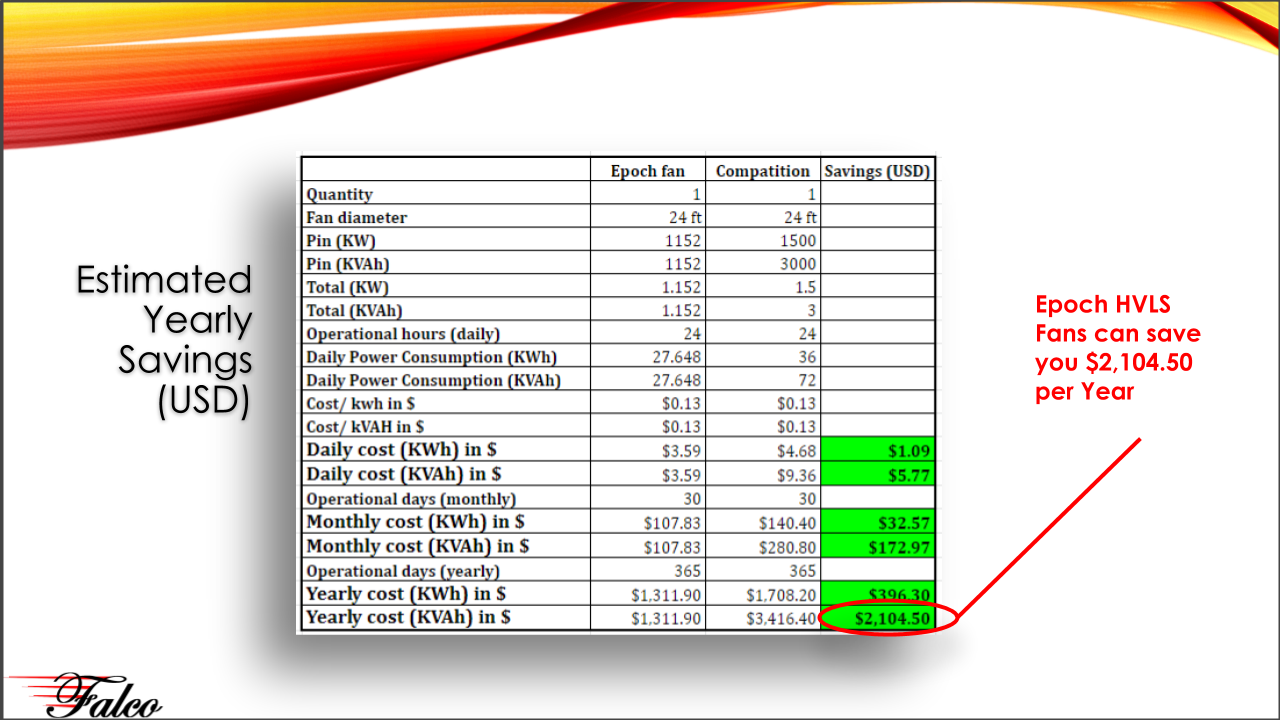A Case Study : Epoch HVLS 24-ft Fan By Falco eMotors Inc.
Report No. 041520-01

Problem:
-
Arvind Smart Textile Limited has a one of the manufacturing plant in Ranchi, India where Garments are manufactured.
-
There is a lot of people working because of garment manufacturing. Workers suffer from heat because the company's shed is made up from steel.
-
The company shed is compact on all sides, so there is no air movement in the shop.
-
Air movement is very important for physical comfort.
-
To make the workers physically and mentally comfort, Management decided to install HVLS fans in the shop.


Solution:
- Epoch 3.0, 24-ft Fan was installed with the following specifications ;
- Motor: Epoch 3.0;
- Coverage Area: 30,000 Sq. Ft. (2,787 Sq. m);
- Speed: 62 RPM;
- Peak Power: 1.5kW/2 hp;
-
Epoch 3.0, 24 ft diameter fan becomes most popular with amazing airflow and airflow efficiency.

Site Survey:
A site survey is mandatory before any HVLS fan recommendation. The survey revealed the following dimensions:
- Total Area: 233 ft X 213 ft = 49,629 Sq. ft.
- Floor to Ceiling Distance: 35 to 40 ft
- By a rule of thumb distance/1.5 gives us the approximate fan diameter.
- In this case, we chose to go with a 24-ft fan.
Fan and Coverage Area:

Test Reports:
Three test reports are collected for each fan installation as follows:
- Power Consumption Report;
- Input Current Report;
- Air Flow Report.
Those reports are shown for this site:

Power consumption report captures the real as well as apparent power. Epoch HVLS fans are the only fans in the world to have active power factor correction and unity power factor. Therefore the Watts (Real Power) and VARs (the apparent power) are almost the same. The power has been captured at 22, 32, 42, 52 and 62 RPM. Power drawn at those speeds are 118, 188, 390, 720, and 1152W respectively. The chart above also shows trend lines generated using Excel for real and apparent power to take into account any measurement errors as fan power consumption can be modeled by well known equations.

The input current is also measured at 22, 32, 42, 52 and 62 RPM. Input current is recorded as 0.56, 0.72, 1.93, 3.15 and 5.11A respectively. The input voltage varied from 232 to 243V during the measurement.

The airflow is measured from the center of the fan and is recorded at every 3-ft distance. Values were recorded upto 30-ft from the center of the fan. The values were respectively, 215, 295, 334, 490, 510, 492, 413, 393, 334 ft/min at distances of 3,6,9,12,15,18,21,24, and 27-ft respectively.
Estimated Yearly Savings while Using Epoch HVLS Fans:

Epoch 24-ft fan was compared against Indian HVLS fan Manufacturer. Based on their data sheet, daily, monthly and yearly power consumption and costs were calculated. An Epoch HVLS fan will save the end user anywhere from $396 to $2,104 per year over any competitive brands because of its unique technology.
Finished Installation:
Above is the Video of the finished installation.

